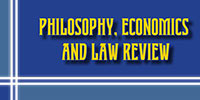Krystyna REZVOROVYCH
Ph.D. (Law) (Dnipropetrovsk State University of Internal Affairs), Ukraine
ORCID iD: orcid.org/0000-0003-1183-613X
goldkristina@gmail.com
UDC 347.235
DOI 10.31733/2786-491X-2021-76-85
Keywords: land market, moratorium, land purpose, agroholding, land reform
Abstract. The article is devoted to the practical analysis of reforming the land market in foreign countries from the temporal and legal aspect in the context of explaining the possibility and expediency of its application in Ukraine.
The article deals with the problem of reforming of the land sale market in the context of foreign countries, taking into account of the temporal legal aspect, which is reflected in the chronological, systematic improvement of the scientific and legal positions, depending on the national peculiarities of the economy, politics and legislation of the countries.
The article focused on the analysis of successful land reforms in the developed democratic countries. We analyzed the structure of land management and the system of land auctioning, which are the part of state regulation in most countries.
Firstly, the article focuses on the realization of a stable economic and legal foundation for a free land market, which is variable in the context of economic liberalization. The free land market has a very wide «chain of consequences», which indicates hard direct proportional dependence on the current situation in the countryʼs economy. Therefore, a «must have» logical step before implementing the reform is a desire to stabilize the economy. In the article we analyzed other external factors that may adversely affect the land market in Ukraine.
The important form of regulation of the land market is to limit the maximum and minimum area of а land that can be purchased by one owner. The territorial interconnection between the maximum area for sale and the territory of the states has been expanded, as well as the political and economic course of development of agricultural production, which, taken together, are the most common factors for establishing such restrictions.
We paid attention to the fact: when countries choose scenarios for land market reform, they should focus on long-term territorial development strategies that exclude economic planning for agricultural land leases.
As a result, it is noted that the repeal of the moratorium on the sale of agricultural land is economically feasible and theoretically justified. Accordingly, we fully support the existing legislative initiative in Ukraine to open up the agricultural land market.
References
- Babchenko, O. (2017). The peculiarities of the legal regulation of land market in the European Union. Scientific Bulletin of the International Humanities University. Series: Law, 25, 34-38. (in Ukrainian).
- Ciutacu, C., Chivu, L. & Vasile, A. (2017). Land Grabbing: A Review of Extent and Possible Consequences in Romania. Land Use Policy, 62, 143-150.
- Dieterich, H., Dransfeld, E. & Winrich, V. (2019). The land-market process. Urban Land & Property Markets in Germany, Routledge, https://doi.org/10.4324/9781351025744.
- Gemeda, B. S., Girma Abebe B., & Eckardt, F. (2019). Urban land speculation; failure of land market. Journal Survey Review, https://doi.org/10.1080/00396265.2019.1661165.
- Goytia, C. (2019). Informal Land Markets. The Wiley Blackwell Encyclopedia of Urban and Regional Studies, https://doi.org/10.1002/97 81118568446.eurs0158.
- Haerlin, B., & Fuchsloch, S., (2016). Land Rush and the Sellout of Europeʼs Farmland, http://www.arc2020.eu/land-rush-land-grab/.
- Hartvigsen, M. (2015). Land reform and land consolidation in Central and Eastern Europe after 1989: Experiences and perspectives, http://doi.org/10.5278/vbn.phd.engsci.00019.
- Kay, S., Peuch, J., & Franco, J. (2015). Extent of Farmland Grabbing in the EU. Policy Department B: Structural and Cohesion Policies, http://www.europarl.europa.eu/RegData/etudes/STUD/2015/540369/IPOL_STU(2015)540369_EN.pdf.
- Kuns, B., Visser, O., & Wastfelt, A. (2016). The Stock Market and the Steppe: the challenges faced by stock-market financed, Nordic farming ventures in Russia and Ukraine. Journal of Rural Studies, 45, 199-217, https://doi.org/10.1016/j.jrurstud.2016.03.009.
- Kvartiuk, V., & Herzfeld, T. (2019). Welfare effects of land market liberalization scenarios in Ukraine: Evidence-based economic perspective, Discussion Paper, no. 186, Leibniz Institute of Agricultural Development in Transition Economies (IAMO), Halle (Saale), http://hdl.handle.net/10419/195097.
- Lerman, Z. (2017). Privatisation and changing farm structure in the Commonwealth of Independent States. In S. G. y Paloma, S. Mary, S. Langrell, & P. Ciaian (Eds.), The Eurasian wheat belt and food security (15-33). Springer International Publishing.
- Mjøs, L. B. (2019). Cadastral development in Norway: the need for improvement. Journal Survey Review, https://doi.org/10.1080/ 00396265.2019.1637094.
- The bill no. 2178-10 «On amendments to certain legislative acts of Ukraine regarding the circulation of agricultural lands», http://w1.c1.rada.gov.ua/pls/zweb2/webproc4_1?pf3511=67059. (in Ukrainian).
- Swinnen, J., Van Herck, K., & Vranken, L. (2016). The diversity of land markets and regulations in Europe, and (some of) Its causes. The Journal of Development Studies, 52(2), 186-205. https://doi.org/10.1080/00220388.2015.1060318.
- Transnational Institute (TNI). (2016). Land Grabbing and Land Concentration in Europe. A Research Brief, https://www.tni.org/files/publication-downloads/landgrabbingeurope_a5-2.pdf.
- Zelenchuk and Tsitsyura v. Ukraine – 846/16 and 1075/16. ER, Udzhment May 5, 2018 [Section IV], https : //hudoc.echr.coe.int/eng/#%22itemid%22:[%22002-11941%22].
